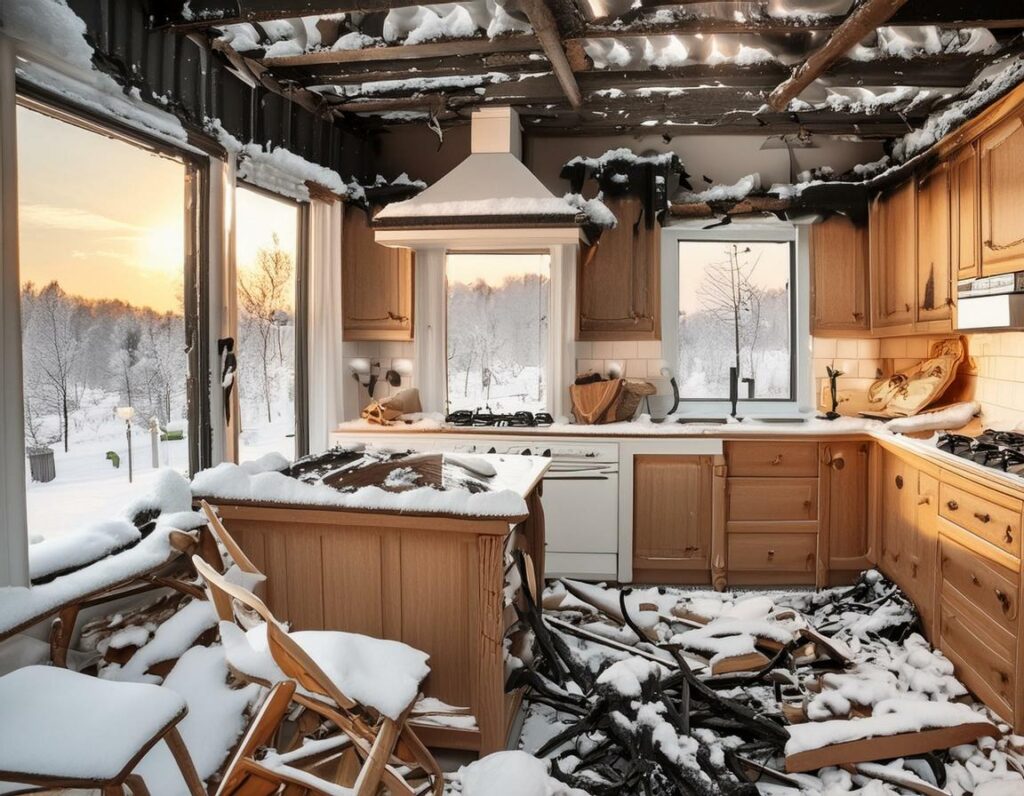
Contents
When faced with fire damage cleanup, why settle for harsh chemicals that harm the environment? Discover the top 5 eco-friendly techniques that effectively restore your space and prioritize sustainability and health. From utilizing green cleaning products to harnessing the power of HEPA air filtration systems, these innovative methods offer a cleaner, greener solution to fire damage. Explore these techniques further to learn how you can tackle the aftermath of a fire while minimizing your ecological footprint and promoting a healthier living environment.
Key Takeaways
- Green cleaning products made from natural, non-toxic ingredients are effective in removing soot and smoke residue.
- HEPA air filtration systems trap small particles like smoke and soot, contributing to a healthier indoor environment.
- Salvage and restoration techniques prioritize items for restoration based on material and damage level, incorporating sustainable practices.
- Ozone treatment is a powerful, eco-friendly method for eliminating lingering odors after fire damage.
- Thermal fogging effectively neutralizes stubborn odors by penetrating porous surfaces, requiring respiratory protection for safety.
Green Cleaning Products
When it comes to eco-friendly fire damage cleanup techniques, utilizing green cleaning products can play an important role in minimizing environmental impact. Green cleaning products are essential components of eco-friendly solutions for fire damage cleanup. These products are formulated using sustainable practices that prioritize the well-being of both the environment and individuals involved in the cleanup process.
Green cleaning products are designed to be environmentally friendly, meaning they’re made from natural, non-toxic ingredients that are safe for the ecosystem. By opting for these eco-friendly solutions, you can reduce the release of harmful chemicals into the air and water systems, promoting a healthier environment post-fire damage.
In addition to being better for the environment, green cleaning products are also effective in removing soot, smoke residue, and other fire-related contaminants. They can help restore your property while minimizing the negative impact on the surroundings.
HEPA Air Filtration
HEPA air filtration systems are necessary components in the process of eco-friendly fire damage cleanup. These systems play a vital role in improving air quality and ensuring the health and safety of individuals involved in the restoration process. Here are three key reasons why HEPA air filtration is crucial for effective fire damage cleanup:
Enhanced Air Quality: HEPA filters are designed to trap small particles, including smoke, soot, and other contaminants released during a fire. By using HEPA air filtration systems, you can effectively capture these harmful particles, preventing them from circulating in the air and reducing the risk of respiratory issues and other health concerns.
Health Benefits: HEPA filtration helps to minimize exposure to potentially hazardous substances present in the air after a fire. By removing harmful particles, these systems contribute to creating a healthier indoor environment for both workers and occupants. This is particularly important in fire damage restoration projects, where air quality can be significantly compromised.
Efficient Removal of Odors: HEPA filters capture smoke particles and help eliminate lingering odors caused by fire damage. This results in a cleaner and fresher indoor environment, enhancing the overall restoration process and improving the comfort of the space.
Incorporating HEPA air filtration into fire damage cleanup procedures is necessary for maintaining air quality and promoting the health and well-being of all individuals involved.
Salvage and Restoration Techniques
To effectively address the aftermath of a fire incident, implementing proper salvage and restoration techniques is vital. Salvage techniques play a pivotal role in saving items affected by fire damage. Quick action is essential to prevent further deterioration. Sorting through items to salvage what can be restored is the first step. Restoration methods involve cleaning, sanitizing, and repairing items to bring them back to their pre-fire condition.
When it comes to salvage techniques, prioritizing items based on their material and level of damage is crucial. For instance, metals can often be salvaged through cleaning and polishing, while fabrics may require specialized cleaning to remove soot and smoke odor. Sustainable practices can be incorporated into salvage efforts by opting for eco-friendly cleaning products and techniques. Using natural cleaners and avoiding harsh chemicals aids in salvaging items and reduces the environmental impact of the cleanup process.
Restoration methods should focus on restoring items and ensuring they’re safe for use. Repairing structural damage, refinishing furniture, and deodorizing textiles are common restoration practices. Eco-friendly solutions, such as using non-toxic sealants and finishes, can promote sustainability throughout the restoration process. By combining salvage techniques and restoration methods with sustainable practices, fire-damaged items can be salvaged and restored effectively while minimizing environmental harm.
Ozone Treatment
Ozone treatment is a popular choice among restoration professionals and is considered a powerful method for eliminating lingering odors and contaminants after a fire. This technique involves using ozone gas to remove odors by chemically altering the compounds that cause the smell. Here are some important considerations regarding ozone treatment:
Ozone safety: While ozone treatment is effective, it’s important to ensure safety measures are in place. Ozone can be harmful when inhaled, so it’s essential to evacuate the premises during treatment and establish proper ventilation before re-entry. Protective gear should be worn by those handling the equipment to prevent exposure.
Environmental impact: Ozone treatment is viewed as eco-friendly as it doesn’t involve the use of harsh chemicals that can harm the environment. However, ozone can have negative effects on plants, so it’s essential to take precautions to prevent outdoor exposure during the treatment process.
Effectiveness: Ozone treatment is highly effective in neutralizing odors by breaking down odor-causing molecules. It can reach areas that may be challenging to clean by other methods, such as porous materials. However, multiple treatments may be necessary for severe odor removal.
Thermal Fogging
Moving on from ozone treatment, another effective method utilized in fire damage cleanup is thermal fogging. Thermal fogging is a process that helps in the elimination of stubborn odors that linger after a fire incident.
This technique involves using a specialized machine that heats a deodorizing solution and releases it as a fog or mist. The fog is then able to penetrate porous surfaces, just like the smoke did during the fire, effectively neutralizing the odors embedded in the materials.
Respiratory protection is a key aspect to remember when using thermal fogging. The deodorizing solution used in the process can be harmful if inhaled, making it essential for the individuals performing the fogging to wear proper respiratory gear.
This precaution ensures that while the thermal fogging is effective in eliminating odors, it doesn’t pose any health risks to the cleanup crew or the occupants of the property.
Recap
Employing environmentally friendly fire damage cleanup methods like green cleaning products, HEPA air filtration, salvage and restoration techniques, ozone treatment, and thermal fogging can aid in efficiently restoring your property while reducing environmental harm. These methods serve as a refreshing change in the middle of a fire-damaged setting, providing a clean and sustainable resolution to the aftermath of a fire.
Recent Posts
What Are Eco-Friendly Water Damage Repair Methods?
When it comes to addressing water damage in an environmentally friendly manner, eco-conscious methods are
7 Best Eco-Friendly Water Damage Repair Methods
When faced with water damage, you must consider the environmental impact of your repair methods.
Sustainable Water Damage Repair Techniques: A How-To Guide
When faced with water damage in your home, it’s crucial to explore sustainable repair techniques
